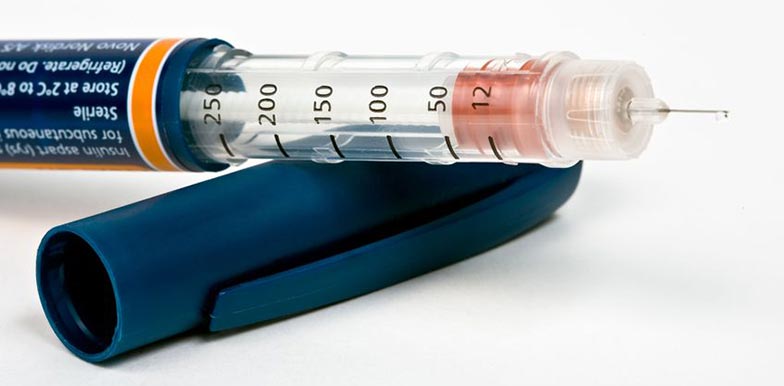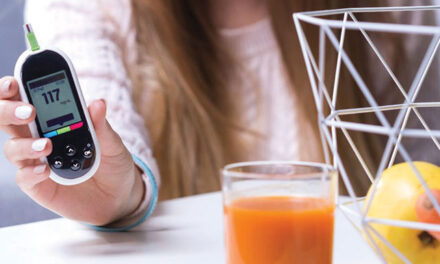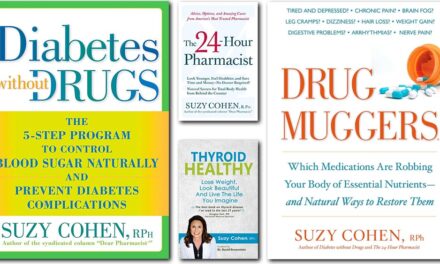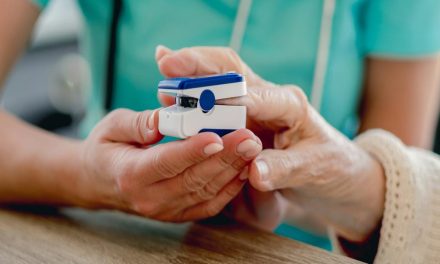Diabetes is an increasingly common problem. It bears noting that in countries with non-westernized diets, diabetes is essentially unheard of—until the diet changes to high sugar and low fiber. Because of this, diabetes is largely a disease caused by our “modern” diet. Shockingly, it is now estimated that one third of adults will get adult onset diabetes. But again, that it used to be rare tells us that Diabetes Is Optional! In addition, over 10 studies have shown that a remarkable new herb, called Hintonia Latiflora (available in the US as Sucontral DTM by EuroPharma) has been shown to be remarkably effective. More on this below.
What Is Diabetes
 Our bodies make sugar as a fuel for our cell’s energy furnaces. It releases it at constant low levels. Releasing too much at once is like flooding the engine in your car with too much gas. It makes it stall out.
Our bodies make sugar as a fuel for our cell’s energy furnaces. It releases it at constant low levels. Releasing too much at once is like flooding the engine in your car with too much gas. It makes it stall out.
For most of human history, we have had a high-fiber diet. This resulted in the carbohydrates and sugars in our diet being released very slowly and steadily into the bloodstream over many hours. Now we have almost 140 pounds of sugar per person per year being added into our diet in food processing. This represents 18 percent of our calories, causing massive spikes in blood sugar. This forces our bodies to prevent sugar from entering the cells too quickly. This change is called “insulin resistance.”
Insulin is the key that opens our cell furnaces so the sugar can get in to be burned for energy. When your cells become deaf to the insulin, the sugar builds up in your bloodstream instead. Meanwhile, the sugar can’t get into the cell to be burned for fuel and your cells are starving.
This is what occurs with insulin resistance. Meanwhile, your cells send out the message that they are energy starved, causing the body to make more sugar and more insulin. These high insulin levels, then proceed to turn the sugar into fat, causing you to pack on the pounds and become even more insulin resistant (thus the abdominal spare tire). The cycle continues until your body can no longer compensate and your blood sugar goes up. At that point you have developed diabetes, and your doctor will usually offer you whatever the newest, most profitable, and sadly often toxic medication the drug companies are marketing to them.
Why The Diabetes Epidemic?
Several factors are creating a perfect storm for diabetes developing. These include:
- Excess sugar and white flour in the diet combined with low fiber.
- Vitamin D deficiency, especially from the misguided advice to avoid sunshine. Sunshine makes vitamin D in our body. Low vitamin D is associated with not only diabetes, but also markedly increased risk for autoimmune illness, pain, hypertension, and other problems.
- The obesity epidemic.
- Decreased exercise.
- Numerous chemicals in our environment, which block testosterone in men and increase testosterone in women.
Inadequate testosterone levels in men (imho anything under 500 ng/dl– research shows the “normal range” is to be an absurdity) have been shown to cause metabolic syndrome. This is a combination of high blood pressure, high cholesterol, and either diabetes or prediabetes. When you see a ‘spare tire’ developing on a gentleman’s abdomen, this is often the culprit. In women, the elevated testosterone is often associated with polycystic ovarian syndrome (PCOS), acne, facial hair growth, and even infertility. Metabolic syndrome improves with the treatments discussed below as well.
Testing
To screen for prediabetes, I will check a fasting insulin level. Ignore the normal range. If the fasting insulin is over 10 uIU/ ml, you should take measures now for prevention. Also check a glycosylated hemoglobin (HgBA1C). If it is over 5.8 percent, you may be developing prediabetes.

Diabetes Is Optional
In fact, this is the title of my newest book, now available on Amazon. It discusses the treatments below in-depth. Begin with simple things that help optimize blood sugar levels in your body. These include:
An Ounce Of Prevention—helping your body maintain healthy blood sugar regulation is:
- Take a good multivitamin high in magnesium and vitamin D. My favorites are the Energy Revitalization System vitamin powder, or Clinical Essentials.
- Cut back sugar intake. This doesn’t mean you can’t indulge your sweet tooth. In fact, chocolate in moderation is a health food. Begin by cutting out sodas and fruit juices, both of which have 3/4 teaspoon of sugar per ounce. This translates to 36 spoons of sugar in that 48 ounce “Big Burp” soda. Enjoy the whole fruit instead. Meanwhile, look at the nutritional label, and divide grams of sugar by four to see how many teaspoons of sugar are in a serving.
- Go for walks in the sunshine. Or find other exercise, preferably outside, that you love.
- Lose weight. This will be easier once you do the rest of the program and your insulin sensitivity improves. Research has shown that with adequate weight loss, diabetes actually goes away in 86 percent of diabetics.
- Optimize testosterone levels in men. I will use bioidentical testosterone to bring the total testosterone up to about 900 ng/dl. In women, I would use the treatments discussed, along with the medications metformin and Aldactone to lower elevated testosterone.
Treating Diabetes
For childhood diabetes, which is a totally different autoimmune illness, insulin is a lifesaving and necessary treatment. For adult diabetics, it is a loan shark, which initially lowers blood sugar.
But because it often causes massive weight gain, it can worsen the diabetes in the long-term. So it may be necessary short-term, but it is not a good overall solution.
In my 40 years as a physician, I have found that most diabetes medications turn out to cause more harm and deaths than benefit. But routinely, physicians are not taught about the research on the drug’s toxicity until after the patent runs out and it is no longer profitable. Then the drug companies are off teaching them about the newest, most money-making, diabetes medication.
I don’t fault the drug companies for this. They are actually very nice people doing their job. Which is to make money. It is the physician’s job to be able to distinguish between what is real and truthful as opposed to slick advertising masquerading as science. But sadly, though exhorted to do so even by the past editors of the New England Journal of Medicine, they don’t realize the difference.
There is one medication that is an exception. It is an excellent medication called metformin, which is low cost and has withstood the test of time. It is highly effective, and well-tolerated. Its main toxicity is that it will sometimes cause nausea or diarrhea (lower the dose) and will routinely cause vitamin B12 deficiency unless someone is taking a multivitamin.
Hintonia Latiflora To The Rescue
From the high mountains of Central and South America, there is an amazing herb that can help lower blood sugars. This miracle botanical is an extract of the bark of a shrubby tree that grows in the Sonoran Desert. It’s been studied in detail for its ability to reverse high blood sugars for over 60 years. It has only recently become available to the North American public in a product called Sucontral-D.
There have been over a dozen studies showing how powerfully effective hintonia is!
How Does Hintonia Latiflora (Sucontral D) Work?
First, it is a rich source of a special family of flavonoids, called Coutareagenin. This polyphenol nutrient found in bark extracts unique to hintonia and appears to be responsible for many of its blood-sugar controlling benefits.
Mexican researchers also found that plant is an inhibitor of the enzyme alpha-glucosidase, which then slows the breakdown of carbohydrates in the food, mimicking the effect of a high-fiber diet.
What Does The Hintonia Research Show?
Solid research in numerous studies shows that not only can hintonia help control blood sugar and overcome insulin resistance, reducing your need for pharmaceuticals. It can also enhance the effectiveness of diabetes medications if your doctor and you decide that you need them.
For example, in a study published in the German journal Naturheilpraxis mit Naturalmedizin (Naturopathic Practice with Natural Medicine), Hintonia latiflora significantly lowered HgBA1C values (average levels of blood sugar), fasting glucose levels (blood sugar before a meal) and postprandial (after eating) blood sugar levels.
Fasting and after meal blood glucose numbers, along with A1C levels, are important because they show how much sugar circulates through your system and how your body deals with it after meals. What the research showed was amazing! Fasting and post-meal blood sugars improved by an impressive 23 and 24 percent respectively with hintonia. And glycosylated hemoglobin decreased by a remarkable average of 0.8 points (about 11 percent)! This means many people went from being diabetic to no longer being diabetic.
Impressively, by the end of the study 39 percent of those using anti-diabetes drugs could reduce their medication levels. Some were able to stop their medication entirely.
But there is more good news. Hintonia not only lowered blood sugar and often reversed diabetes. It also eliminates many of the symptoms of diabetes an impressive 73 percent over time. This is a massive change that can dramatically increase your quality of life, and well-being.
Participants also saw improvements in blood pressure, lipids, and liver values.
People with diabetes struggle with blood sugars that spike and plummet during the day and night. As this occurs, your energy, pain and mental clarity may find themselves on a roller coaster as well. One of hintonia’s greatest benefits is that it helps keep those sugars steady throughout the day and night, making life easier and contributing to long-term better glucose control.
The president of the International Diabetes Foundation was the lead author on another study that strongly recommended the use of this unique herb in treating and preventing Type 2 diabetes. Not only because of improved blood sugar control, but also because of its effectiveness in lowering cholesterol and other elements of metabolic syndrome that can lead to Type 2 diabetes.
So the bottom line? Diabetes is optional!











